#EMS Synthi AKS
Explore tagged Tumblr posts
Text






Brian Eno by Erica Echenberg
#Brian Eno#Recording Discreet Music#EMS Synthi AKS#music#1970s#musician#home studio#reel to reel#synthesizer#guitar#Erica Echenberg#photography#black and white
91 notes
·
View notes
Text
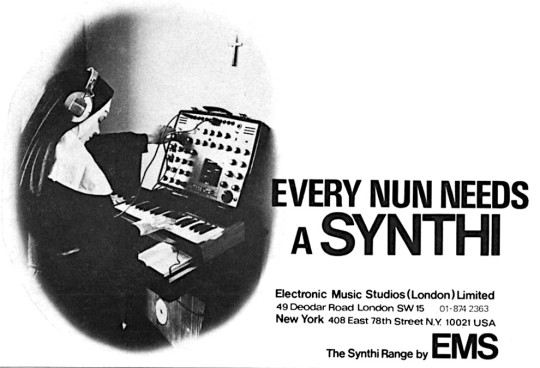
EMS: SYNTHI AKS | est. MAR 1972
#advertising#synthesizer#music history#retro tech#70s#EMS#synthi aks#black and white#monochrome#technology#nun#u#FAVE
4K notes
·
View notes
Text
youtube
EMS Synthi AKS solo
#edgarfroese#klausschulze#ems#synthi#aks#session#synth#synthesizer#ks#keyboard#sequencer#sound#moog#modular#arp2500#Youtube#claudemenu
2 notes
·
View notes
Text
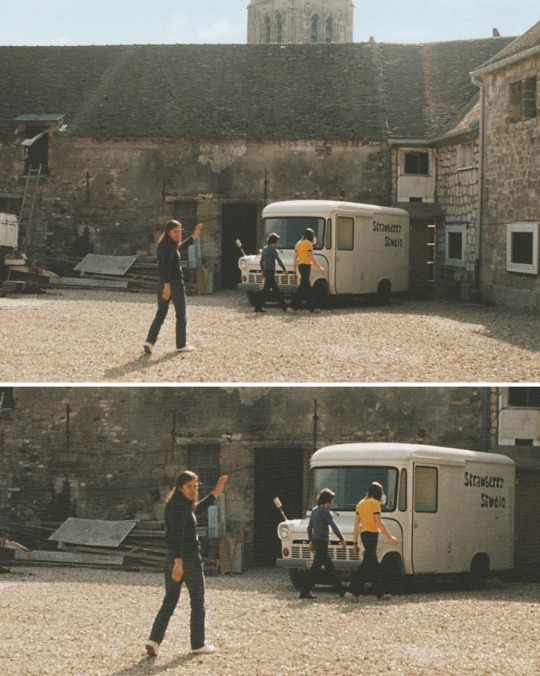
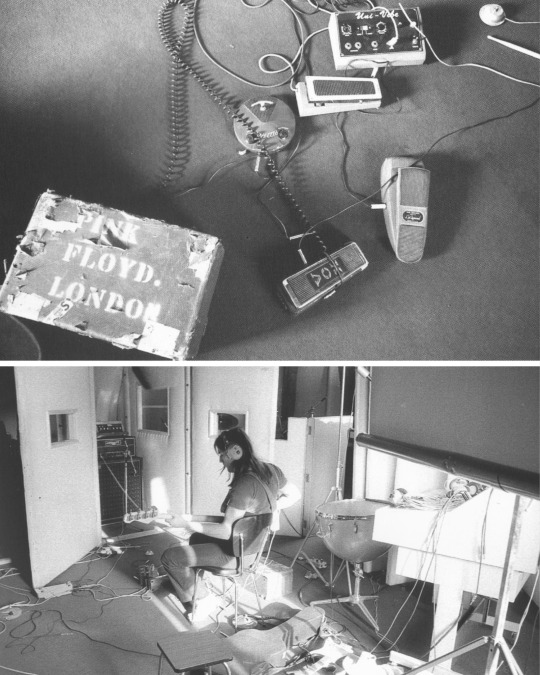
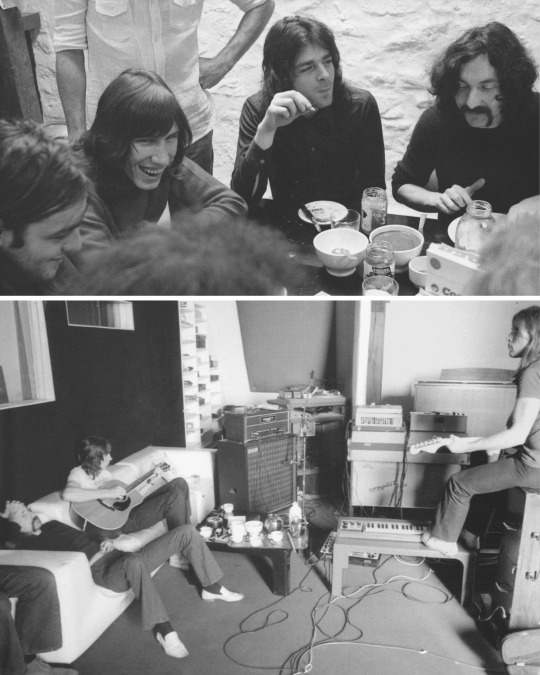
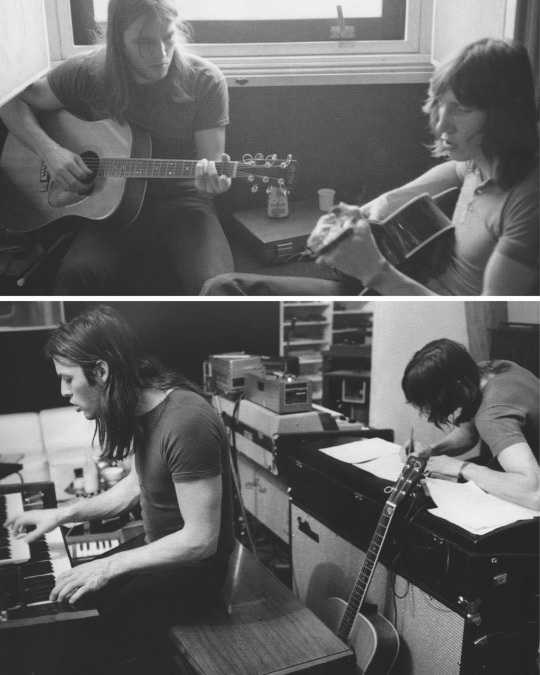
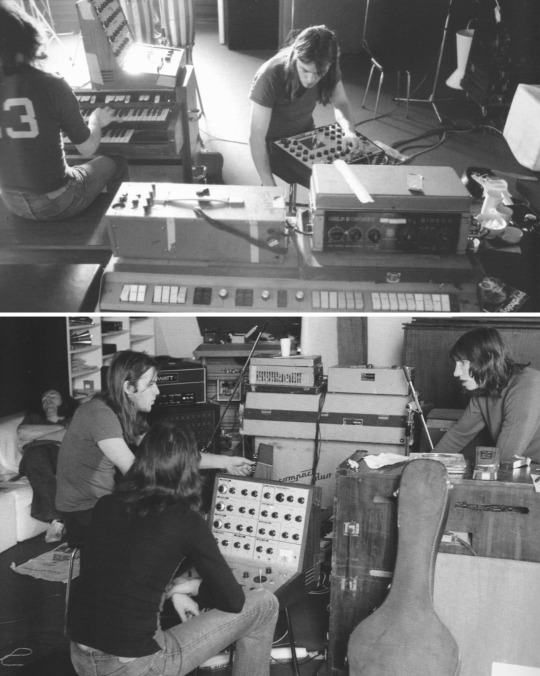
OBSCURED BY CLOUDS, 1972
Wedged between Meddle and The Dark Side Of The Moon, Pink Floyd released Obscured By Clouds. The band's second outing as composers for a Barbet Schroeder film (the first being More), the material consisted of music for the soundtrack to the movie La Vallée.
Either side of a Japanese tour, the songs had been hastily written and recorded during two one-week periods in February and March in the Strawberry Studio at the Château d'Herouville, near Paris. Musically ahead of its time, it contained excellent harmonies between David and Richard Wright both vocally and instrumentally. Along with the bullet Strat, David Gilmour used The Black Strat for the recording.
Exploring what could be achieved utilising the additional second socket, an XLR wired as a send and return that David had recently fit to the guitar, he used it with his usual set up of equipment consisting of Hiwatt amps with Wem 4 × 12 cabinets plus effects: a Binson echo, Fuzz Face distortion, Dearmond 610 volume/tone pedal, Vox Wah-Wah, Univibe and Colorsound Power Boost. The recently acquired newly developed EMS VCS3 and AKS Synthi synthesisers offered an additional range of sounds.
Despite the hectic recording schedule the album gained critical praise and contains some powerfully sublime moments, exhibiting elements of what was to come with The Dark Side Of The Moon
Disc & Music Echo called it "an amazing album” …
credits | Phil Taylor - JD Mahn - Nick Mason
191 notes
·
View notes
Text

Invisible Waves 33.
18.08.2024
Intro 00:00 Moray Newlands-The meal was cooked before the bell rang 00:24 The Harvard sentences Projection wave machines BeepStreet Sunrizer (software synth)
Chapter 1 02:24
Oberu-Debris 06:33 Cartas de Japón-Faune I 11:05 Cartas de Japón – Live session (La Siesta del Fauno) Sequential Circuits Pro-One (synth) Sequential Circuits Prophet-5 (synth) EMS Synthi AKS (synth) ARP Odyssey (synth) ARP Solina string synthesizer (synth) Yamaha CP-70 (synth) Moog Minimoog Model D (synth) Roland VP-330 (synth) Moog Moogerfooger MF-103 (FX pedal) Moog Modular (synth) ARP 2600 (synth) Roland Juno-60 (synth) Arturia Beatstep Pro (controller) La Siesta del Fauno (studio)
Chapter 2 21:16
Bolbec-Vengeance Tropicale 28:14 Piero Piccioni (composer) Michel Legrand (composer) Nostalgia 77 (band) Aldemaro Romero (composer) Piero Umiliani (composer) cavaquinho (instrument) Mabreuch (band) Fish Factory (Studio)
TOKEE-Альбатрос (Abdicant’s Diomedea Mix) 31:03
Chapter 3 34:42
Ghost Funk Orchestra-Helios 37:30 Eddie Palmieri Esquivel The Lively Ones Dusty Springfield War
Space Dimension Controller-Beyond2 40:43
Chapter 4 44:58
Slow Reels-Heartshaped 50:32 Home Normal Slowcraft Records Morr Music Fluid Audio
#Moray Newlands#Oberu#Cartas de Japón#Bolbec#TOKEE#Abdicant#Ghost Funk Orchestra#Space Dimension Controller#Slow Reels#Cyclical Dreams#Batov Records#Mahorka#Colemine Records#Aus Music#quiet details#Dundee#London#Belfast#UK#British Columbia#Buenos Aires#Argentina#Rouen#France#Bulgaria#Moscow#Russia#Boston#Massachusetts#New York
2 notes
·
View notes
Text
Dust Volume Nine, Number 10

Older, but not a bit wiser, the Hives return
Fall comes with its smell of maple in the leaves, its intimations of mortality and, this year, its share of unsettling events—war in the middle east, AI in everything and the murder of our beloved Bandcamp by capitalist privateers. (We are not equating these things by any means.) Like always, we turn to music, the annihilating blare of metal, the agile interplay of improvisation, the well-shaped contours of pop, depending on our individual tastes. We hope you’ll find something to ease your own personal burden in all this as well. Contributors include Bryon Hayes, Bill Meyer, Andrew Forell, Tim Clarke, Jonathan Shaw, Ian Mathers, Alex Johnson, Jennifer Kelly and Ray Garraty.
Due to technical issues we're posting this in two parts, so don't miss the second one.
Ad Hoc — Corpse (Shame File Music / Albert’s Basement)
Ad Hoc was a Melbourne-based improvising unit, an experimental outfit that should have higher prominence. It only took 40-plus years, but Shame File Music and Albert’s Basement are finally spearheading a reissue initiative. Last year saw the arrival of the trio’s sole release, the hypnotic Distance cassette. It disappeared the moment it became available. Corpse documents an unconventional live performance from the group. They prepared their instruments (guitars, an EMS Synthi AKS synth and tape loops) for performance prior to the arrival of the audience and then shut off their amps. When all were seated, the trio turned on the amplifiers and unfurled an aleatoric blast of sound. The resulting music is far removed from the ambient tone clusters of Distance. The first piece shimmers in a way that calls to mind Matthew Bower’s Sunroof project, while the latter piece bathes in guitar noise so thick that it may have influenced The Dead C’s The Operation of the Sonne EP. Ad Hoc have today’s noisemakers beat: Corpse presents itself with a freshness that belies its 1980 provenance.
Bryon Hayes
Axolotl — Abrasive (Souffle Continu)
The French trio Axolotl existed for a few years in the early 1980s, and it reflects the aesthetic concerns of its time. Guitarist Marc Dufourd’s playing betrays some acquaintance with the work of Derek Bailey and Henry Kaiser, and the fibrous tones and agile exchanges between reeds players Jacques Oger and Etienne Brunet recall Evan Parker. All three double on electronics, hand percussion and utterances. These accessories, in combination with the concentration of the album’s 12 tracks, give the music a truculent attitude and just-the-facts brevity that brings to mind punk and post-punk. This may be free improvisation, but it is improvised from a point of view, and it’s that informed attitude that makes the album worth visiting nearly 40 years after its original release.
Bill Meyer
Will Butler + Sister Squares — Self-Titled (Merge)
youtube
Will Butler joins with Sister Squares — multi-instrumentalists Jenny (Butler’s wife) and Julie Shore, Sara Dobbs and drummer/producer Miles Francis — for their debut album. Bouncy, heartland rock garlanded with that 1980s Fairlight and Linn drum sound mixes with touches of art rock as Butler emotes wholehearted. The influence of the 20 years Butler spent with Arcade Fire is inescapable, but it feels like the quintet have also been listening to Billy MacKenzie (“Long Grass”) and Russell Mael (“Arrow of Time”) as well as Springsteen, Mellencamp and company. “Hee Loop” sounds like a mash of Paul Simon and Peter Gabriel. The themes and emotions can be big in that Arcade Fire way that’s equal parts exhilarating and exhausting, but the album works best when the band dial down the melodramatic flourishes as on “Car Crash” and “The Window,” where Butler is right in your ear, tired, disillusioned, real. This is a record I wanted to like both more and less. For every heartfelt moment and interesting musical choice, there’s a cringe-inducing gestural overreach that makes you wince. A bit like his former band but with enough promise to persevere with.
Andrew Forell
Claire Deak — Sotto Voce (Lost Tribe Sound)
Melbourne-based composer Claire Deak’s last release on Lost Tribe Sound was 2020’s The Old Capital, a fantastic collaboration with Tony Dupé. In my Dusted review I said, “There’s so much wonderful stuff going on across these seven songs that it’s a delight to revisit.” As its title suggests, Deak’s solo debut, Sotto Voce, very much sits at the opposite end of the musical spectrum. This is subtle, minimal music that softly arises out of silence and speaks an elusive language. The background to the album’s creation is Deak’s exploration of the work of two women composers from the early baroque era, Francesca Caccini (1587–c.1645) and Barbara Strozzi (1619–1677). The dominant musical elements are strings, harp and voice, with other instruments coloring the edges of these understated, starkly beautiful compositions. Across the album’s 42 minutes the music feels, at times, to be battling the entropy of erasure, struggling to be heard amid the cacophony of these overstimulated times. For that reason alone, it’s necessary to invest your attention and listen closely. The experience is eerie and transportive.
Tim Clarke
Mike Donovan — Meets the Mighty Flashlight (Drag City)
On a musical Venn diagram showing the intersecting circles of garage rock, lo-fi, and psych, Mike Donovan has set up his sandbox. With Sic Alps he veered more noisy and lo-fi; with Peacers he favored a straight-ahead garage-rock sound. On this new record with Mike Fellows, AKA The Mighty Flashlight, Donovan steers in the direction of shambolic psychedelic-pop in the vein of the Olivia Tremor Control. (To anyone who knows and loves OTC, this is obviously a very good thing.) The splashy drums and percussion tracks feel like a gestural afterthought rather than a rhythmic backbone the songs are built around, and Donovan and Fellows steer these songs into some choppy, unexpected waters. Opener “Planet Metley” is the clearest and most successful distillation of their aesthetic, offering up a staggering range of ideas in under four minutes, stopping and starting erratically, the bass roving all over the fretboard. At the other end of the spectrum, “Laurel Lotus Dub” is the kind of experiment that sounds like it was more fun to create that it is to listen back to. Between these two extremes there’s the junkshop boogie of “A Capital Pitch,” which features the hilarious line, “Hanging out on the ramparts with some dickheads in black,” the concise drum-machine and organ instrumental “Amalgam Wagon,” and the plaintive, country-flavored “Whistledown.” Wherever Donovan roams it’s usually worth following, and Meets the Mighty Flashlight is a winning collaboration that fizzes with fun.
Tim Clarke
Everything Falls Apart — Everything Falls Apart (Totalism)
“Somn” means sleep, or more poetically death. It’s the title of six of the seven tracks from Everything Falls Apart, the self-titled album from the duo of Belgian bassist Otto Lindholm (born Cyrille de Haes) and English producer Ross Tones. Those titles (numbered six to 11) and the coda “Wonderfully Desolate” tell you only part of the story of the music the pair produce. Their conversation focuses on the nuance of the Lindholm’s double bass which Tones swathes in electronic effects, stretching notes and motifs into near drones in timbres that rise from the murk like lugubrious sentinels. This is seriously heavy music but the dynamism of the duo’s understanding and interplay distinguishes Everything Falls Apart. Whilst many of the pieces focus on stasis and decay, “Somn 9” is a desert storm with clicking percussion, almost didgeridoo like growls from the bass and screeching electronic noise. On “Somn 11”, deep bowed notes support Lindholm’s move through the registers as if shaking from fitful dreams into the morning light. “Wonderfully Desolate” is comparatively unadorned, a string quartet playing against the end times, shimmers of light through the cracks.
Andrew Forell
False Fed — Let Them Eat Fake (Neurot Recordings)
youtube
Is it accurate to call a band including members of legendary underground acts Amebix (Stig Miller), Nausea (Roy Mayorga) and Broken Bones (Jeff Janiak) a “supergroup”? It might help to note that Janiak has sung for Discharge since 2014, and Mayorga has done a couple stints as drummer for Ministry. All names to conjure with (though a few of us first encountered Mayorga as a teenager back in the 1980s Lehigh Valley hardcore scene, when he drummed for Youthquake; West Catty Playground Building forever, man). In any case, the players have pooled their talents to create this death-rocking, sorta goth, sorta post-punk record, and it’s a lot of grim, grimy fun. Most of the music is mid-tempo, grand and romantic in its gestures, but shot through with a crusty growl in the guitars and production tone. The best songs speed things up a bit; both “The Tyrant Dies” and “The Big Sleep” have compelling momentum, complementing the stakes of songs’ ideas. It's Armagideon Time, people. Here’s your soundtrack, from dudes that know.
Jonathan Shaw
Hauschka— Philanthropy (City Slang)
German composer Volker Bertelmann’s 15th album of prepared piano pieces under the name Hauschka is noticeably warmer than some of his previous works. Joined by Samuli Kosminen on percussion and electronics and cellist Laura Wiek, Hauschka continues his exploration of the rhythmic and timbral possibilities of his instrument. At times almost jaunty, there are echoes of Bertelmann’s previous experiments with melancholic atmospherics but the general tone here is welcoming and optimistic. Kosminen adds subtle effects which frame rather than obscure the piano. There’s a touch of Satie in Hauschka’s playful iconoclastic approach to the piano and his deceptively simple melodies, especially on “Loved Ones” where Wiek’s plangent cello lines sustain and decay over an allusive harmony that speaks both of innocence and experience. At the other end of the spectrum, the closing piece “Noise” builds abstract ambience from repeated piano notes, smears of cello and a quiet wash of effects as if the players are enveloped in a thick damp fog. A lovely album for both fans and newcomers.
Andrew Forell
The Hives — The Death of Randy Fitzsimmons (Disques Hives)
youtube
There are usually going to be some questions when a band comes back with a new record after over a decade, maybe especially so with an act like Swedish garage/punk flamboyants the Hives; can they match the energy of their youth? Are they still willing and able to give us the old thrills? Or have they (and this is usually asked with a small, tasteful shudder of disgust) matured? It doesn’t take very long into first single/first track “Bogus Operandi” for the concerned listener to have reason for a sigh of relief. Anyone who used to (or still does?) blast “Main Offender” or “Hate to Say I Told You So” or “Walk Idiot Walk” should feel the galvanizing charge of a true, Frankensteinian resurrection once the riff hits. And across these not-quite-32 minutes (the brevity is also a promising sign) Howlin’ Pelle Almqvist and the boys kick up exactly the kind of racket you’d want from them, with tracks like “Trapdoor Solution” and “The Bomb” savoring the kind of gleefully dumb fun they’ve always provided (with a nice sideline in some of Almqvist’s deliberately, over-the-top awful narrators on “Two Kinds of Trouble” and “What Did I Ever Do to You?”). They even continue to throw out small, satisfying variations on the classic Hives sound like the brassy swagger of “Stick Up” and the surprisingly heartfelt thrash of “Smoke & Mirrors”. They may have killed off their “sixth member,” but the Hives are otherwise in rude health.
Ian Mathers
Islet — Soft Fascination (Fire)
The Welsh psych-electronic oddballs in Islet are on their fourth full-length now but show no signs of settling down. Soft Fascination is a bonkers mash up of dance pop, art song, hip hop, noise and folk. “Euphoria” floats a feather-light daze, a la Avey Tare, then punctures it the rat-at-tat of snare, the rifle shot rap repartee of Emma Daman Thomas. Gossamer textures of synth weave in and around the main action, snapping tight at intervals, like sails catching a hard wind. The whole thing is butterfly ephemeral with strong wires holding it up, a combination of daydream and architecture. “River Body,” if anything, tips even crazier, with its infectious sing-song, skip-rope vocals, its tootling toy keyboards, its blasts of noise and friction. And what can you make of “Sherry” which bucks and heaves and shouts out “Ay, ay, ay, ay,” like a lost Matias Aguayar cut? “Ay, ay, ay, ay,” indeed.
Jennifer Kelly
Jute Gyte — Unus Mundus Patet (Self-released)
Unus Mundus Patet is not the most dissonant or challenging record Adam Kalmbach has released during his 20-plus-year run under the Jute Gyte moniker. But neither is this black metal for the kvlt trve believers or for the hipster-adjacent sets, be they transcendental or ecstatic or blackgazy. The songs twist and turn in on themselves, always clear in their expressions of complex musical ideas, and also — somehow, someway — listenable and enjoyable. Avant-garde? Sure thing, and likely a much more authentic iteration of that phrase’s meaning than the music many other metal bands churn out under cover of high-minded beard stroking. See the by-turns undulating and fragmenting “Killing a Sword” or the trudging, vertiginous and then utterly thrilling “Philoctetes.” Jute Gyte doesn’t make music for the background, but if you can give these songs your full attention, you’ll be rewarded. Turn it up and open the portal into somewhere much weirder and more marvelous.
Jonathan Shaw
Danny Kamins / Chris Alford / Charles Pagano — The Secret Stop (Musical Eschatology)
Free improvisation may be a little sparser on the ground in the southern USA than it is in Chicago or New York, but The Secret Stop affirms the vigor of those who participate. Guitarist Chris Alford and drummer Charles Pagano play in New Orleans, and Danny Kamins is a saxophonist from Texas; this encounter took place in the Crescent City. As even players in places like the aforementioned northern cities or London will affirm, travel comes with this territory. Their interactions display a capacity to sustain balance when the energy is high and to back off when doing so will transform the music’s tension. Kamins intersperses long, coarse tones with emphatic pops, and Alford evidences a fluent stutter that suggests he’s spent a lot of time studying James “Blood” Ulmer’s sound grammar. Pagano’s cymbal sizzle and mutating not-quite-patterns provide both forward momentum and a framework within which the action occurs.
Bill Meyer
MIKE \ Wiki \ The Alchemist — Faith Is a Rock (ALC)
youtube
The long awaited collaboration between The Alchemist and MIKE took a sudden turn when they took on board another New York rapper Wiki who steals the show here. Both Wiki and MIKE were outcasts recording music in the vein of Earl Sweatshirt, even though MIKE was always a better version of Earl with only possibly a tenth of his fame. Knowing no rest, The Alchemist (that is his fourth collab this year) takes both MCs way out of their comfort zone, refusing to pander to the needs. MIKE and Wiki have to deal with The Alchemist’s fast and thick layered production, and it works for all of them. “Mayors A Cop” is a standout here, and Faith Is a Rock is one strong contender for the tape of the year.
Ray Garraty
Camila Nebbia — Una Ofrenda A La Ausencía (Relative Pitch)
The title translates as An Offering To Absence, which of course raises the question, what’s missing? Camila Nebbia is a multidisciplinary artist who grew up in Buenos Aires, Argentina, but has seems to have spent a fair chunk of time moving around Europe in recent years, and is currently based in Berlin. She has a sizable discography, but this correspondent has not heard most of it, so let’s just focus on the album at hand. Its 16 tracks present three facets of her work — acoustic tenor saxophone, electronically adjusted saxophone and poetry — with the first method best represented. The unaccompanied saxophone performances reveal her mastery of both weight-bearing muscularity and adroit tap-dancing on the far side of the fences that confine conventional tonality. But when she layers long tones and feedback, Nebbia becomes a one-woman orchestra transmitting heavy Penderecki vibes. The one poem included, “Dejo que me lieve” (“I let it lie”), is recited in Spanish, and no translation is offered; perhaps home is what’s not there, so she needs to manifest it creatively?
Bill Meyer
[Continued in Part 2, because Tumblr decided we only get 10 audio links.]
#ad hoc#bryon hayes#dust#dusted magazine#axolotl#bill meyer#will butler#square sisters#andrew forell#claire deak#tim clarke#mike donovan#everything falls apart#false fed#jonathan shaw#hauschke#the hives#ian mathers#islet#jennifer kelly#jute gyte#danny kamins#MIKE#ray garraty#camila nebbia#Angelika Niescier#Bandcamp#Youtube
8 notes
·
View notes
Quote
当時、モーグⅢ-Cは「マンションが買えるくらいの価格」とも言われ、冨田は銀行から融資を受けて購入したという。 「個人がモーグⅢ-Cを購入したのは、日本では冨田先生だけでした。他は東京藝術大学など音楽の教育機関が研究用に購入したようです。
(5ページ目)YMO「第4のメンバー」が語る“若き日の坂本龍一さん” 出会いは渋谷公会堂のイチベル制作、モーグⅢCを巧みに使いこなした衝撃 | デイリー新潮
- - - - - - - - - - - - - - - -
作家の安部公房もこの時期に個人でシンセサイザーを購入してる。モーグではなくEMSのSynthi AKSだったよう*1。
安部公房 - Wikipedia
日本における最初期のシンセサイザーのユーザーでもあった (当時、日本でシンセサイザーを所有していたのは安部のほか冨田勲とNHK電子音楽スタジオを数えるのみで、安部は職業と関わりなく使用していた)。1985年 (昭和60年) にNHKが箱根の仕事場を訪れて収録した「訪問インタビュー」では、安部が自身の演劇作品のためにみずから作成した効果音等を公開している。
*1 美術教材のアイデア: 安部公房の使ったシンセサイザー
「EMS Synthi AKS」シンセサイザーについて説明する安部公房。|大村理文|note
(NHKの番組の安部公房)
3 notes
·
View notes
Photo



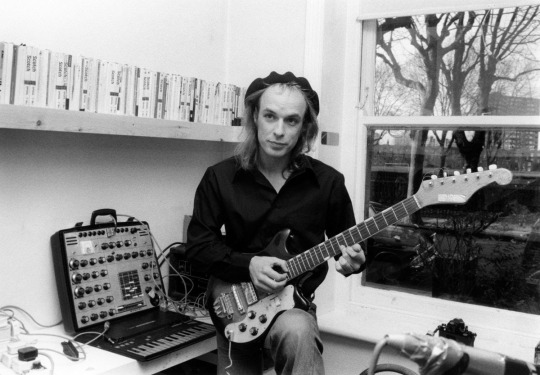


Eno at home, London, December 1974
(Photographs: Erica Echenberg)
#brian eno#eno#erica echenberg#1970s#70s#london#glam#ambient#taking tiger mountain#synthi#ems synthi aks
318 notes
·
View notes
Photo

Feater - Time Million feat. Vilja Larjosto (from Socialo Blanco, Running Back 2019)
#feater#time million#vilja larjosto#running back#socialo blanco#daniel meuzard#EMS synthi AKS#balearic#balearic pop#seaside#pop#synth-pop#romantic#dreamy#sunset#lovers#sand#ocean#beach#swooning#octagon eyes#sun lounge
12 notes
·
View notes
Photo
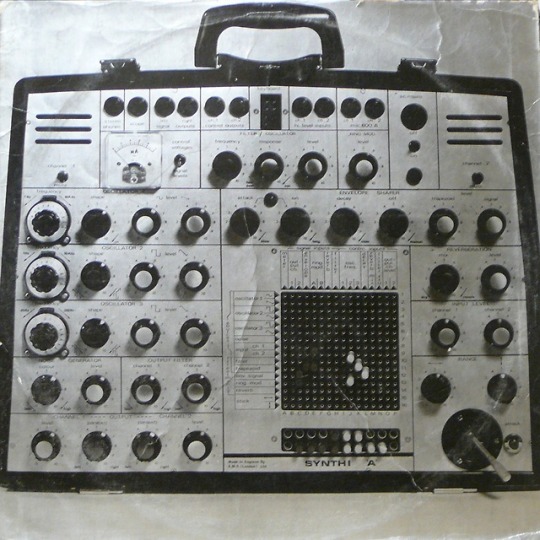
Electronic Music Studios “EMS Synthi and the Composer”
#records#lps#albums#lpcovers#albumart#albumcovers#EMS synthi AKS#EMS#synthi#AKS#Synthi a#synths#vintage analog#derbyshire#vorhaus#zinovieff#godIwishIhadaSynthiA
8 notes
·
View notes
Photo

48 notes
·
View notes
Video
youtube
Neuf Voix - Laboratory (Capriccio for violin, piano, clarinet and EMS synthi AKS) 2022
https://www.discogs.com/release/22038943-Neuf-Voix-Composizioni-nel-tempo-Volume-1
3 notes
·
View notes
Video
youtube
Greg Foat - The Mage
Greg Foat’s 9th album 'The Mage' joins the dots between the past and future of British jazz. Enlisting the talents of jazz/library/soundtrack legends Duncan Lamont, Art Themen, Ray Russell and Clark Tracey to collaborate with their modern contemporaries Greg Foat, Moses Boyd and Heliocentric's drummer Malcolm Catto to create something undeniably British but outward looking and global. A long time personal ambition for Greg was to work with Trinidadian songstress Kathy Garcia, on 'The Mage', this wish is granted as she joins him to re-imagine the deep Xian masterpiece ‘Of my Hands', 45 years after recording it as a young girl. Greg’s compositions and arrangements showcase the old and new, downtempo folkscapes, free jazz with notes of hip-hop and soul from the young team flavouring the mix. Featuring Simon Ljungman and Friends as a male choir, Greg's EMS Synthi AKS experiments (made famous by Dr Who) the album is a testament to the versatility and pure musicality of all those involved and Greg Foat’s ability to bring artists together to record beautiful, timeless music.
2 notes
·
View notes
Audio
Fotoplastikon - Kontury LP - electronic soundtrack from the 1984 Polish suspense movie, remastered (Endless Illusion)
Poland, early 80's. Lieutenant Milosz Szwajcer is assigned to the young student's murder case. Struggling with his personal life and unclear releationship with recently murdered young woman, he tirelessly chases the psychopathic killer. Things are darker than they seem. Strange things soon begin to occur. He must decipher the reality from his delusions, phantoms and supernatural phenomenons. Pieces of the puzzle indicate that the new violent crime is being planned. The race against time is on. Original score from obscure Polish movie 'Kontury' (1984), directed by Lucjan Kut. Equipment: Korg Sigma, Korg Lambda, Korg Preset 900PS, Korg KR55B, Roland Juno-60, Roland CR68, Solina String Ensemble, EMS Synthi AKS, Hohner Clavinet D6, Yamaha CS5, Farfisa Syntorchestra, Lira 61PRS. Remastered from the original tapes by Marco Spaventi. Graphic layout: Jan Horcik (Heavyweight)
#Fotoplastikon#electronic#synthesizers#80s#reissue#endless illusion#ma spaventi#2020#soundtrack#poland
6 notes
·
View notes
Audio
(HEENTodile)
1 note
·
View note